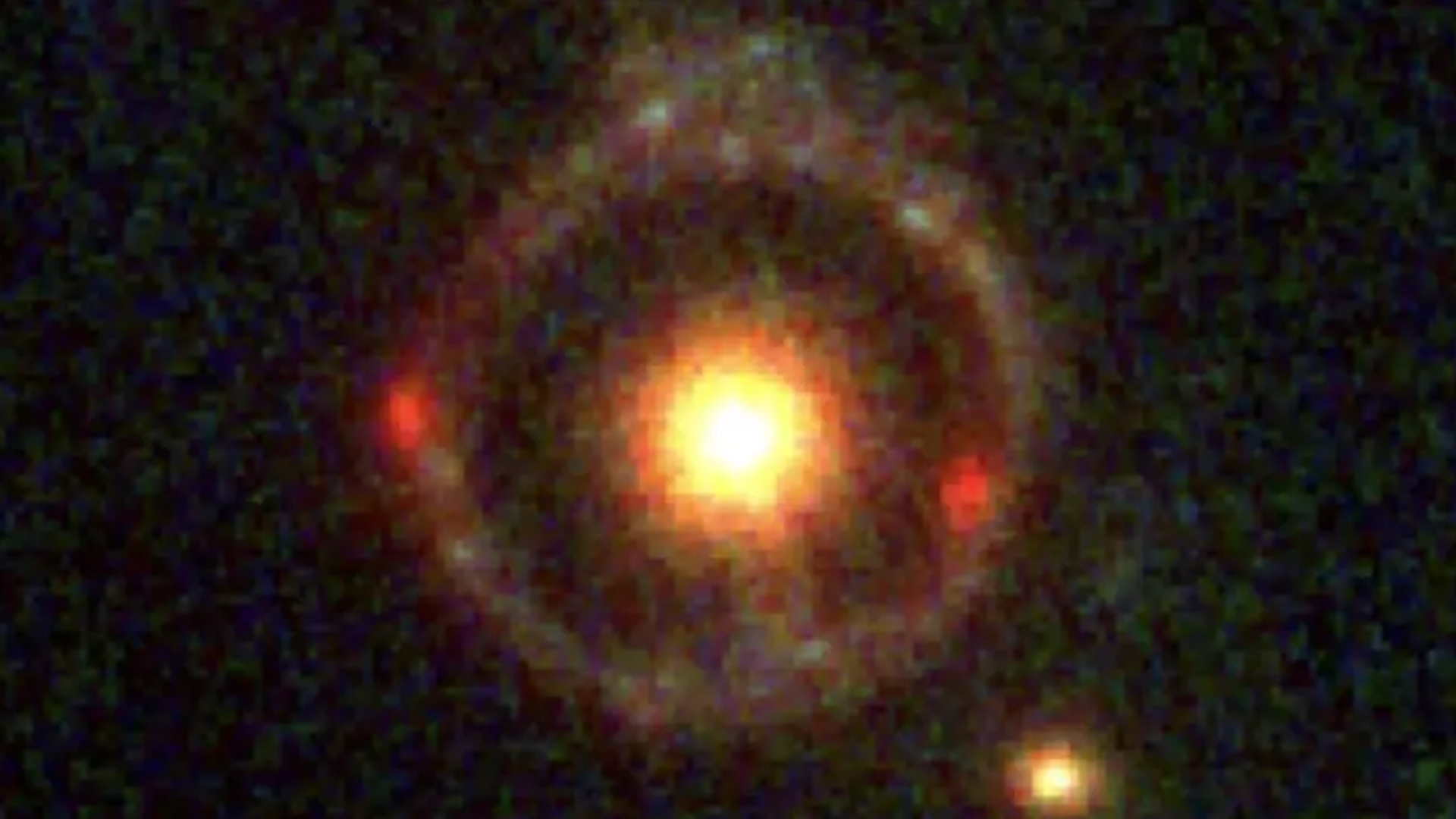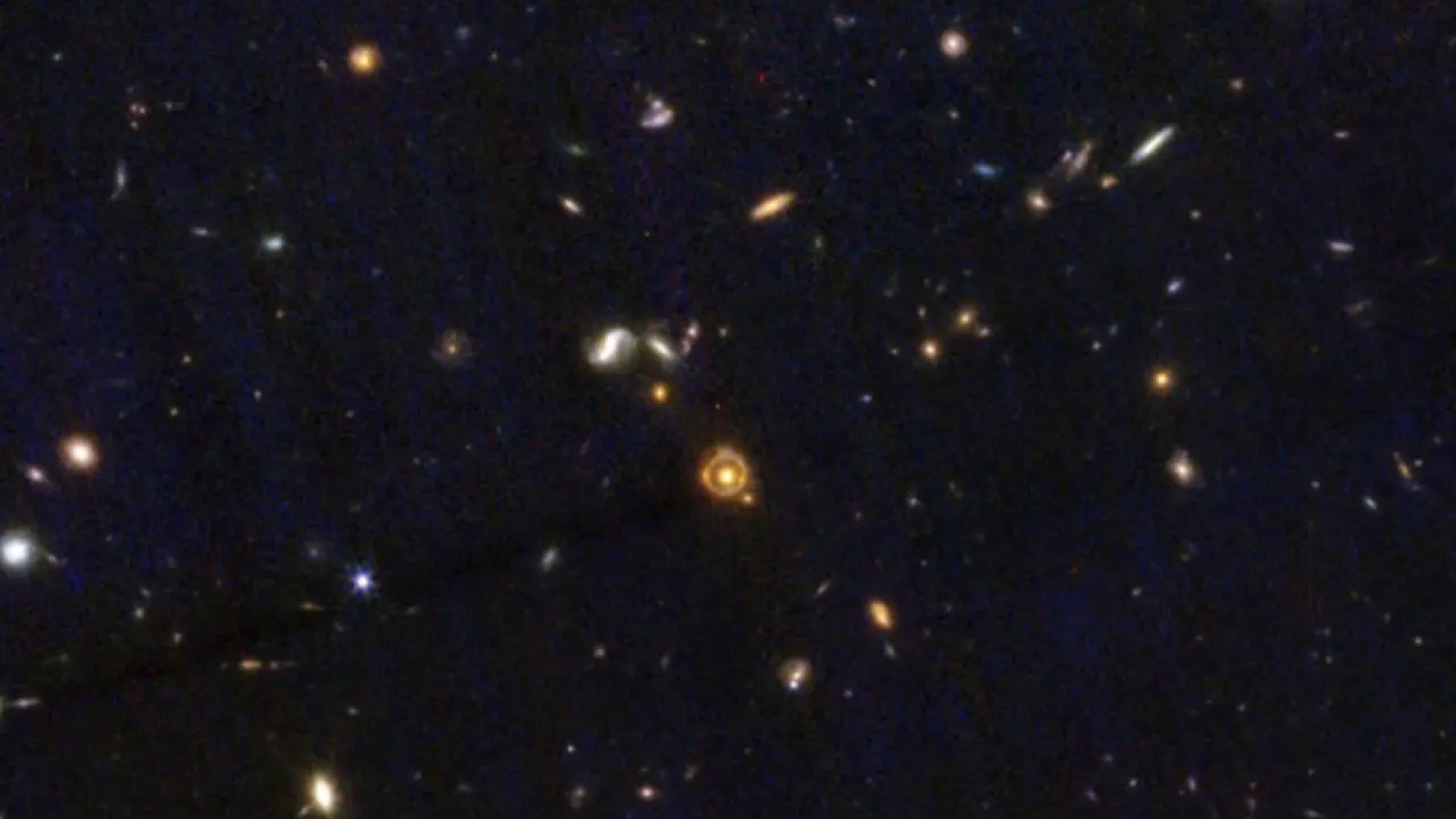
Researchers may have solved the mystery of why a distant galaxy surrounded by an eerily perfect "Einstein ring" is denser than it should be: The hefty galaxy, which was discovered by the James Webb Space Telescope (JWST), is being compressed by a massive halo of dark matter.
Einstein rings, which were first predicted by Albert Einstein's theory of relativity, are luminous halos created by a phenomenon called gravitational lensing, which occurs when light from a distant object is warped around a "foreground object" located directly between the distant object and the observer. The light looks as if it is being bent by gravity. But in reality, the light is traveling in a straight line through space-time that has been warped by the foreground object's hefty mass.
In September 2023, astronomers discovered an Einstein ring, named JWST-ER1, in data collected by JWST. The luminous structure has two parts: JWST-ER1r, which is the actual luminous ring made of light from the distant galaxy; and JWST-ER1g, which is the foreground object that lenses the distant galaxy's light.
JWST-ER1r is around 21 billion light-years from Earth, making it the most distant gravitationally lensed object ever discovered; after adjusting for the universe's expansion rate, researchers estimated that the galaxy was born about 10.3 billion years ago, or around 3.4 billion years after the Big Bang.
Related: Dark matter's secret identity could be hiding in distorted 'Einstein rings'
At the time of this discovery, researchers noticed that the lensing object, JWST-ER1g, was unusually dense. The size and shape of the ring surrounding this galaxy suggested that it had a mass of around 650 billion suns, which is very high for a galaxy of its size. A large amount of this mass is likely dark matter — a mysterious form of matter that does not interact with light but makes up around 85% of all matter in the universe. But even when this mysterious substance is accounted for, the galaxy still seems too massive for its size.
"Additional mass is needed to explain the lensing results," the researchers wrote in a paper at the time. However, they provided no explanation for what this "additional mass" could be.

But in a new study, published April 11 in The Astrophysical Journal Letters, a new group of researchers has proposed an explanation for JWST-ER1g's unusual density: A halo of dark matter surrounding the galaxy is being compressed into an ever-tighter space as regular matter collapses into it, resulting in a higher density of the mysterious substance.
"Our numerical studies show that this mechanism can explain the high dark matter density of JWST-ER1g," study lead author Demao Kong, a researcher in the physics and astronomy department at the University of California, Riverside (UCR), said in a statement.
This is not the first true Einstein ring spotted with JWST. In September 2022, a Reddit user tapped into the telescope's data to reveal a perfectly circular ring of light roughly 12 billion light-years from Earth. JWST has also utilized gravitational lensing to snap the most distant star ever detected and some of the universe's oldest galaxies.
The researchers hope the telescope can help identify more Einstein rings to test their theory further.
"JWST provides an unprecedented opportunity for us to observe ancient galaxies formed when the universe was young," study co-author Hai-Bo Yu, a professor in UCR's physics and astronomy department, said in the statement. "We expect to see more surprises from JWST and learn more about dark matter soon."







